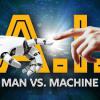
Breaking News
 Elon Tells Rogan the Real Reason Democrats are Prolonging the Government Shutdown [WATCH]
Elon Tells Rogan the Real Reason Democrats are Prolonging the Government Shutdown [WATCH]
 Newsom: Trump Is Trying to Rig the Election -- He Knows GOP Will Lose
Newsom: Trump Is Trying to Rig the Election -- He Knows GOP Will Lose
 There is zero justification for the Department of Justice's silence while the most serious...
There is zero justification for the Department of Justice's silence while the most serious...
 Gabbard Says Trump Has Ended America's Era Of 'Regime Change'
Gabbard Says Trump Has Ended America's Era Of 'Regime Change'
Top Tech News
 Graphene Dream Becomes a Reality as Miracle Material Enters Production for Better Chips, Batteries
Graphene Dream Becomes a Reality as Miracle Material Enters Production for Better Chips, Batteries
 Virtual Fencing May Allow Thousands More Cattle to Be Ranched on Land Rather Than in Barns
Virtual Fencing May Allow Thousands More Cattle to Be Ranched on Land Rather Than in Barns
 Prominent Personalities Sign Letter Seeking Ban On 'Development Of Superintelligence'
Prominent Personalities Sign Letter Seeking Ban On 'Development Of Superintelligence'
 Why 'Mirror Life' Is Causing Some Genetic Scientists To Freak Out
Why 'Mirror Life' Is Causing Some Genetic Scientists To Freak Out
 Retina e-paper promises screens 'visually indistinguishable from reality'
Retina e-paper promises screens 'visually indistinguishable from reality'
 Scientists baffled as interstellar visitor appears to reverse thrust before vanishing behind the sun
Scientists baffled as interstellar visitor appears to reverse thrust before vanishing behind the sun
 Future of Satellite of Direct to Cellphone
Future of Satellite of Direct to Cellphone
 Amazon goes nuclear with new modular reactor plant
Amazon goes nuclear with new modular reactor plant
 China Is Making 800-Mile EV Batteries. Here's Why America Can't Have Them
China Is Making 800-Mile EV Batteries. Here's Why America Can't Have Them
World's fastest EV charger gives drivers 120 miles in 8 minutes

The fast charger could shift electrons in the battery so fast that an average electric car would be able to gain 120 miles (200 km) of range in just 8 minutes. In order for electric cars to be fully accepted as long-range touring vehicles, they'll need these kinds of crazy charge rates and more, considering that fossil fuel-powered cars can be filled up in a matter of a few minutes. Mind you, when you're not doing long distances, EVs can be charged slowly at home for a tiny fraction of what a tank of fuel would cost you.
Current charging infrastructure is far slower. A CHAdeMO can deliver up to 62.5 kW, the J1772 level 2 spec allows up to 19.2 kW charging, and the current Tesla Supercharger will pump power into a Model S at 120 kW. So the leap to 350 kW is a pretty huge jump.
Unfortunately, there's currently nothing on the market that can handle that kind of power, with many cars limited to 50 kW charging to preserve battery life. The 2018 Nissan Leaf can take a maximum of 100 kW, and while Tesla's Model 3 is rumored to be capable of charging at somewhere between 184 and 210 kW, it's currently limited to around 100.

 China Innovates: Transforming Sand into Paper
China Innovates: Transforming Sand into Paper

